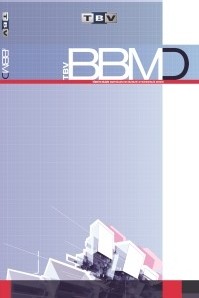Aralık Tip-2 Bulanık Mantık Yönteminin Tedarikçi Seçiminde Kullanımının Önemi Üzerine Bir Araştırma
Bulanık karar vermenin ana çalışma alanı belirsizlik altında karar vermedir. Çünkü elimizde kriterlere, alternatiflere ve sonuçlara ilişkin sayısal değerler değil sözel değerler mevcuttur ve bu da belirsizliğe neden olmaktadır. Ayrıca kriterlerin ve alternatiflerin çok ve belirsizliğin yoğun olduğu problemlerin çözümünde tip-2 bulanık mantık kümelerin kullanılması klasik mantık kümelerine göre daha esnek ve başarılıdırlar. Bu yüzden tedarik zinciri yönetiminde uygun bir tedarikçinin seçilmesi, bir tedarik zincirinin etkin yönetiminde çok önemli ve zorlayıcı bir görevdir. Bu amaçla yapılacak olan bu çalışmada, kriterlerin ve alternatiflerin yoğun olduğu problemler de tedarikçi seçimi için genel tip-2 bulanık kümelerin özel bir hali olan aralık tip-2 bulanık kümelerin kullanımının önemi üzerinde durulmaktadır.
Anahtar Kelimeler:
Tip 2 Bulanık Mantık, Aralık Tip 2 Bulanık Mantık, Tedarik Zinciri Yönetimi, Tedarikçi Seçimi
___
- [1] Karakaşoğlu, N. (2008). Bulanık çok kriterli karar verme yöntemleri ve bir uygulama, Yüksek Lisans Tezi, Pamukkale Üniversitesi Sosyal Bilimler Enstitüsü, Denizli.
- [2] Chen, C.T. ve Sue-Fen Huang, S.F. (2006). Order-Fullfillment Availabelity Analysis İn The Supply Chain System With Fuzzy Operation Times, International Journal of Production Economics, 101, ss.185-193.
- [3] Türk, S., John, R., & Özcan, E. (2014, September). Interval type-2 fuzzy sets in supplier selection. In Computational Intelligence (UKCI), 2014 14th UK Workshop on (pp. 1-7). IEEE.
- [4] Wu, Z. ve Chen, Y. (2007). The maximizing deviation method for group multiple attribute decision making under linguistic environment. Fuzzy Sets Syst., 158(14):1608–1617, July 2007.
- [5] Eminov M., Ballı S. (2004). Karmaşık Problemler İçin Belirsizlik Altında Çok Kriterli Bulanık Karar Verme, Yöneylem Araştırması ve Endüstri Mühendisliği XXIV. Ulusal Kongresi Bildiriler Kitabı, Gaziantep-Adana, s. 440-443.
- [6] Pala, O. (2013). Bulanık mantık ve çok kriterli karar verme uygulaması, Yüksek Lisans Tezi, Dokuz Eylül Üniversitesi Sosyal Bilimler Enstitüsü, İzmir.
- [7] Paksoy, T. (2013). Bulanık Küme Teorisi. Nobel Yayınevi, Ankara.
- [8] Ulu, C., (2013). Granüler tip-2 bulanık yapılar kullanılarak sistemlerin modellenmesi ve kontrolü, Doktora Tezi, İstanbul Teknik Üniversitesi Fen Bilimleri Enstitüsü, İstanbul.
- [9] Thomas, D. J. & Griffin, P. M. (1996). Coordinated supply chain management. European journal of operational research, 94(1), 1-15.
- [10] Şen, Z. (2004). Fuzzy logic and system models in water sciences. Turkish Water.
- [11] Zadeh L. A. (1975). The concept of a linguistic variable and its application to approximate reasoning-1, Inform. Sci., 8, pp. 199–249.
- [12] Karnik N. N. (1998). Type-2 fuzzy logic systems. Ph.D. Dissertation, ProQuest Dissertations & Theses (PQDT).
- [13] Castillo O., Melin P. (2008). Type-2 Fuzzy Logic: Theory and Applications. Verlag Berlin Heidelberg, Springer. [14] Mendel J. M. (2001). Uncertain Rule-Based Fuzzy Logic Systems: Introduction and New Directions. Upper Saddle River, NJ, Prentice-Hall.
- [15] Bulut, M. (2010). Bulanık mantık için yeni bir yaklaşım: tip-2 bulanık mantık. e-Journal of New World Sciences Academy 5 (3),ISSN:1306-3111, pp.541-557.
- [16] Linda O., Manic M. (2011). Interval type-2 fuzzy voter design for fault tolerant systems. Information Sciences, 181 (14), pp. 2933–2950.
- [17] Jammeh E. A., Fleury M., Wagner C., Hagras H., Ghanbari M. (2009). Interval type-2 fuzzy logic congestion control for video streaming across IP networks. IEEE Transactions on Fuzzy Systems, 17 (5), pp.1123–1142.
- [18] Kahraman, C., Büyüközkan, G. ve Ruan, D. (2004). A Fuzzy Multi-Criteria Decision Approach for Software Development Strategy Selection, International Journal of General Systems, 33 (2–3), p.259 280.
- [19] Ayağ, Z. Ve Özdemir, R.G. (2006). A Fuzzy AHP Approach to Evaluating Machine Tool Alternatives, Journal of Intelligent Manufacturing, 17, p.179-190.
- [20] Ferdinando, D. M. ve Salvatore, S. (2014). Type-2 interval fuzzy rule-based systems in spatial analysis. Information Sciences 279, ss. 199-212.
- [21] Qin, J., Liu, X. ve Pedrycz, W. (2016). An extended TODIM multi-criteria group decision making method for green supplier selection in interval type-2 fuzzy environment. Pll: S03772217(16)30811 6, DOI: 10.1016/j.ejor.2016.09.059.
- [22] Keshavarz, M., Zavadskas, E. K. ve Amiri, M. (2016). Multi-criteria evaluation of green suppliers using an extended WASPAS method with interval type-2 fuzzy sets. Journal of Cleaner Production, pp. 213-229.
- [23] Heidarzade, A., Mahdavi, I. ve Amiri, N. M. (2016). Supplier selection using a clustering method based on a new distancefor interval type-2 fuzzy sets: A case study. Applied Soft Computing, pp. 213-231.
- [24] Yaakob, A., Khalif, K., Naim, KM., Gegov, A. E., Rahman, A. And Fatimah, S. (2015). Interval type 2- fuzzy rule based system approach for selection of alternatives using TOPSIS. In: Proceedings of the 7th international joint conference on computational intelligence: SCITEPRESS – Science and Technology Publications, pp. 112-120. ISBN 978-989-758-157-1.
- [25] Liao, H., Xu, Z., & Zeng, X. J. (2015). Hesitant fuzzy linguistic VIKOR method and its application in qualitative multiple criteria decision making. IEEE Transactions on Fuzzy Systems, 23(5), 1343-1355.
- [26] Chan, F. T. S., Kumar, N. (2007). Global Supplier Development Considering Risk Factors Using Fuzzy Extended AHP-based Approach, Omega International Journal of Management Science, 35, p.417-431.
- ISSN: 1305-8991
- Başlangıç: 2005
- Yayıncı: Türkiye Bilişim Vakfı
Sayıdaki Diğer Makaleler
Aralık Tip-2 Bulanık Mantık Yönteminin Tedarikçi Seçiminde Kullanımının Önemi Üzerine Bir Araştırma
Müslüm ÖZTÜRK, Prof. Dr. Turan PAKSOY, Melek ÖZTÜRK
Yapay Zekâ İle Kablosuz Algılayıcı Ağları Eniyileme
Mehmet Akif ÇİFÇİ, Atilla ELÇİ
İnternet Üzerinden Görsel Bilgisayar Arayüzü ile Denetlenebilen Nokta Matris LED Tabela
Cihan Karakuzu, Sabri Gültekin
Forex Piyasasındaki Değişimlerin Bulanık Mantık Yöntemiyle Tahmin Edilmesi
Aykut DURGUT, Serdar BİROĞUL, İbrahim YÜCEDAĞ
Nesnelerin İnternetinin Kişisel, Kurumsal ve Ulusal Bilgi Güvenliği Açısından İncelenmesi
Mehtap ÜLKER, Yavuz CANBAY, Şeref SAĞIROĞLU
Pantograf Katener Sistemlerde Görüntü Segmantasyon Tabanlı Adaptif Ark Tespiti
